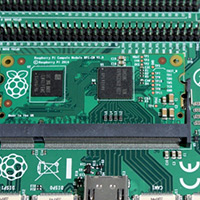

The Advantages of Low-E3 Glass in Modern Architecture
In today's fast-paced world, where energy conservation and environmental sustainability are more crucial than ever, the application of innovative materials in construction has gained significant attention. One such material leading the charge is Low-E3 glass. Low-E, or low-emissivity glass, is coated with a thin layer of metallic oxide that reflects heat while allowing natural light to enter. The '3' in Low-E3 signifies a specific formula designed to enhance its performance, particularly in residential and commercial buildings.
Understanding Low-E3 Glass
Low-E3 glass is specifically engineered to control heat transfer, providing a high level of thermal performance. Unlike standard glass, which can allow a significant amount of heat to escape during colder months or let unwanted heat in during warmer months, Low-E3 glass minimizes this energy loss or gain. Its unique coating reflects infrared energy while still enabling visible light to pass through, making it an ideal choice for windows and facades.
Energy Efficiency and Sustainability
One of the most compelling advantages of using Low-E3 glass is its energy efficiency. By controlling the interior climate of a building, Low-E3 glass reduces reliance on heating and cooling systems, leading to lower energy bills. This efficiency not only results in significant cost savings for building owners but also contributes positively to the environment by reducing carbon footprints. As a result, many green building standards, such as LEED (Leadership in Energy and Environmental Design), advocate for the use of Low-E glass in construction to achieve sustainability goals.

Comfort and Aesthetics
Low-E3 glass also enhances the comfort of indoor environments. By minimizing heat transfer, it creates a more consistent interior temperature, eliminating cold or hot spots near windows. This is particularly beneficial in large commercial spaces or residential homes, where temperature imbalances can affect overall comfort. Additionally, because it allows ample natural light while blocking harmful ultraviolet (UV) radiation, Low-E3 glass protects furniture and flooring from fading. This feature not only preserves aesthetic appeal but also reduces the need for constant replacements.
The Cost-Effectiveness of Low-E3 Glass
While the initial investment for Low-E3 glass may be higher compared to traditional glazing options, the long-term savings in energy costs make it a cost-effective choice over time. The installation of Low-E3 windows can lead to a return on investment through decreased utility bills, government incentives, and potentially higher property values. Homebuyers today are increasingly seeking energy-efficient features, making properties equipped with Low-E3 glass much more attractive in the real estate market.
Conclusion
In conclusion, Low-E3 glass represents a remarkable advancement in building materials that offers multiple benefits ranging from energy efficiency and sustainability to aesthetic appeal and enhanced comfort. As architects and builders continue to meet the challenges of modern construction, the adoption of Low-E3 glass is likely to become increasingly widespread. Its ability to balance energy conservation with elegant design makes it an essential component of modern architecture, ultimately contributing to a greener and more sustainable future. Whether for residential or commercial projects, incorporating Low-E3 glass is a step toward intelligent building practices and environmental stewardship.